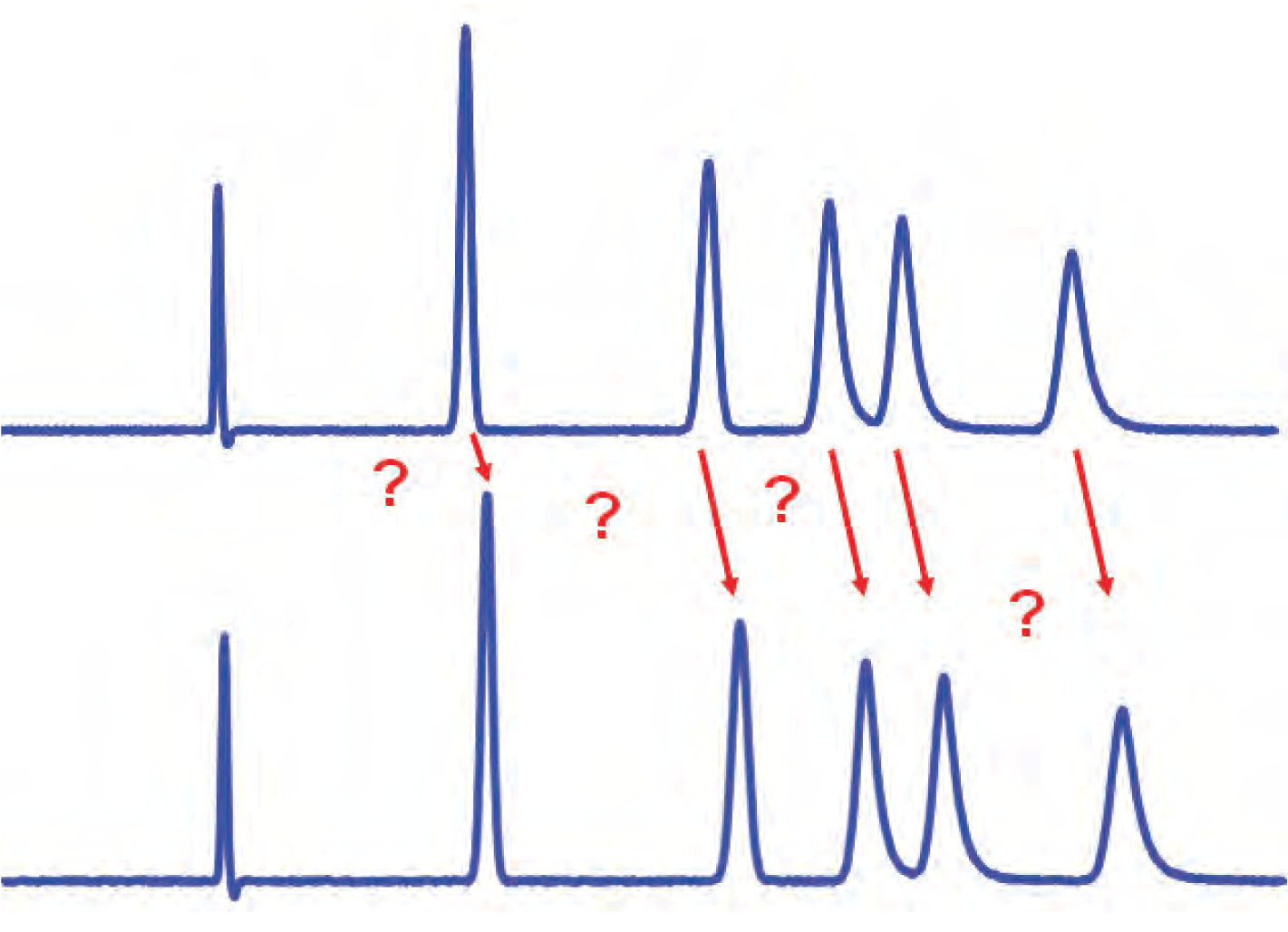A reader complained about retention times that changed in an overnight HPLC run and wondered how to diagnose the problem source. The question left too many possibilities, and because there was no complaint about changing resolution, I’ll assume that all the peaks moved in the same direction to longer or shorter retention times.
There are only a few factors that are likely to affect the chromatogram in this manner. A change in the flow rate, the mobile phase, the column, or the temperature are the most likely candidates. Let’s take a quick look at how we might diagnose each of these.
A change in flow rate is unlikely to reduce retention times, because this would require an increase in flow. An increase in flow rate is likely only if the pump was set improperly, and certainly would not appear as a continuing change in retention. A leak or the presence of a bubble in the pump is a more likely problem source for flow rate reduction. Make a volumetric flow check by collecting a 1 mL/min flow in a 10-mL volumetric flask and time how long it takes to get to the mark. If the flow is lower than expected, look for air bubbles, a bad pump seal, a malfunctioning check valve, or a leak. If the flow is OK from the pump, inspect the rest of the system forleaks.

Mobile phase and column changes usually occur over a longer time period than overnight, but both of these could be checked by substitution.
Make a new mobile phase and try it. If that doesn’t help, replace the column. Remember to change just one thing at a time and observe the results. Otherwise it will be difficult to figure out what change fixed the problem.
My guess is that the problem is related to the column temperature. My rule of thumb for temperature and reversed-phase separations is that a 1 ºC change in temperature can change retention by ≈2%. If column temperature control is inadequate, the overnight temperature change of many laboratories is sufficient to cause noticeable changes.
When I sent my suggestions to the reader, she responded that she did not have a column oven. Aha! There’s the problem. I strongly suggest that you never operate the column without a column oven – as this reader found out, there is too much of a chance of problems when the laboratory temperature changes. If you need a stop-gap procedure while your new oven is on order, wrap the column in insulation (I like the foam pipe-wrap like I use in the basement to keep my water pipes from freezing) and make sure any heating or air conditioning vents are not blowing directly on the instrument. It may take a little creative work with cardboard and duct tape to close off or redirect an offending heating duct.
This blog article series is produced in collaboration with John Dolan, best known as one of the world’s foremost HPLC troubleshooting authorities. He is also known for his research with Lloyd Snyder, which resulted in more than 100 technical publications and three books. If you have any questions about this article send them to TechTips@sepscience.com




